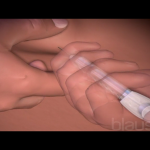I mentioned previously that USP General Chapter <800> – Hazardous Drugs—Handling in Healthcare Settings has been approved and will be published February 1, 2016. Thankfully, the Compounding Expert Committee approved a delayed official implementation until July 1, 2018. Obviously, the committee felt that enforcing Chapter <800> sooner would create a hardship on systems that aren’t close to being ready and need the added time to make changes.
There is going to be a lot of confusion around USP <800>, and for that reason, I will be proactively learning about its impact on healthcare systems and how it differs from the current version of USP <797>.
First up on my learn-about-USP<800> list for 2016 is a webinar – The Missing Link: Practical Tips for Preparing for USP 800 – sponsored by Pharmacy OneSource. According to the webinar site: “In this webinar, Patricia C. Kienle, RPh, MPA, FASHP and Eric S. Kastango, MBA, BSPharm, FASHP will provide practical tips to assure compliance with upcoming USP Chapter 800 Hazardous Drugs: Handling in Healthcare Settings. Facilities, PPE, personnel training, and environmental monitoring will be discussed. The link between USP Chapters 795, 797, and 800 will be explained.â€Â Patricia and Eric are both leading experts in this field and typically have great insight into sterile compounding regulation. It’s definitely worth an hour of your time.
The webinar is scheduled for on Wednesday, January 13.
You can get more information on General Chapter <800> Hazardous Drugs—Handling in Healthcare Settings to be Published in USP 39–NF 34, First Supplement here.





